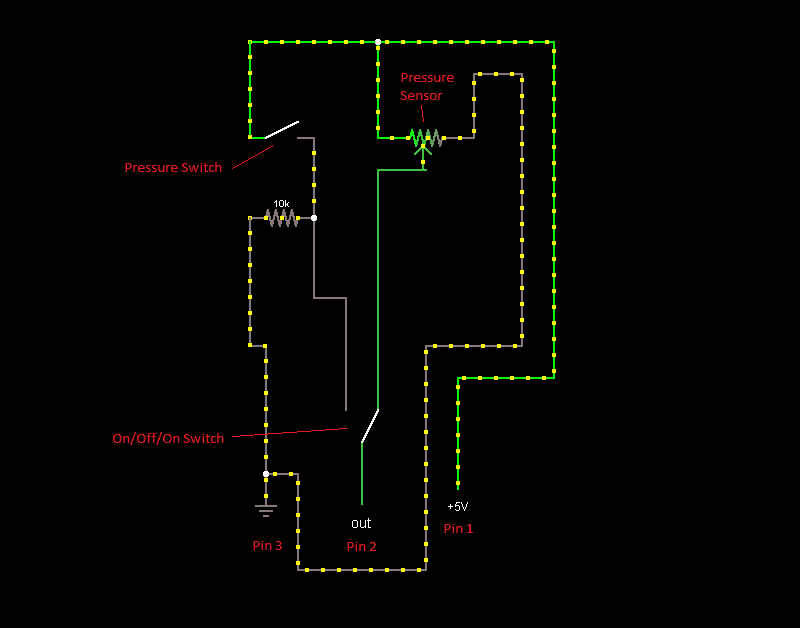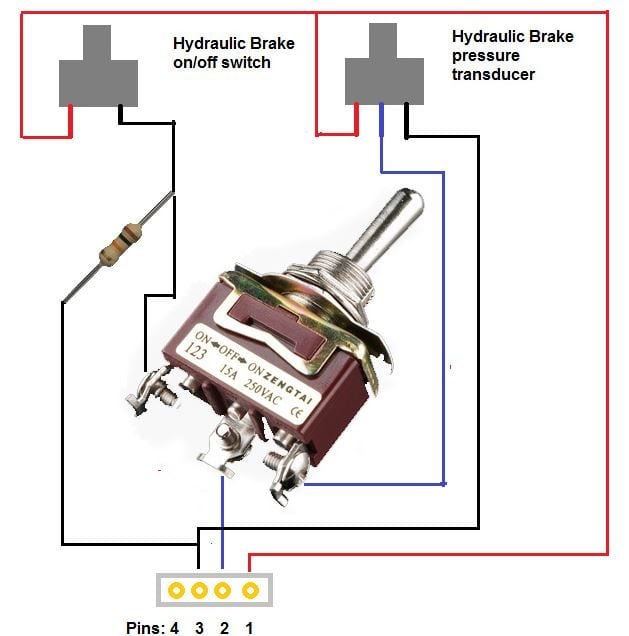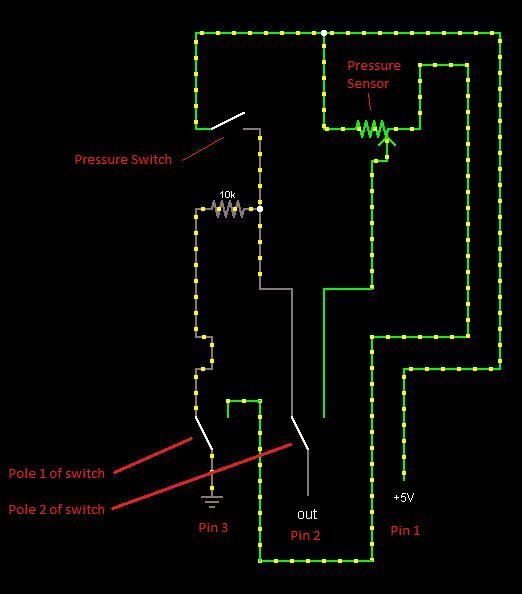- 1,358

- Redmond, WA
- mrbasherman
Please don't quote this entire block on this topic, it will just make a big mess of things. 
I am providing this information to help prevent you from releasing the magic smoke from your expensive equipment. However, what you do with the info that follows is done at your own risk. I take no responsibility for your actions, that is your job.
I have been asked on occasion to provide a cable with which someone can connect a SFA1 or FL2 adapter to the handbrake port on a set of Clubsport or CSR Pedals. I have done this several times now. On one occasion I provided a few cables that would allow a person to use their Fanatec sequential shifter as the handbrake. (digital on/off) As well, I have seen many people ask just what the connector is, etc. There seems to be some mystery surrounding just what the handbrake port on the PCB can do... As well, not every CSP PCB has this port... So before you get your hopes up, you should check.
Well, the connector that fits is called a JST ZH style. These can be purchased very cheaply, along with the crimp terminals that go in the plug. The problem lies in the necessity for a tool to crimp the terminals onto the wires. This tool is at minimum, $54 US. That makes for a pretty expensive cable for a DIY project.
I am going to put more details in here as I go along, but for now I will go over some of the basics.
What does the port do?
I have seen some misinformation about this board that needs clearing up...
The handbrake port is recognized as ANALOG in the Forza series of games. So if you connect a pot to the handbrake port and turn it, the handbrake is variable from 0 to 100 percent.
The handbrake port is recognized by Windows. However, it does not show up on the Fanatec properties page. This does not matter... If you go into a game, you can map it to something.
Connector - (plugs into board):
Rather than bothering with giving you the model number of the connector, etc. Pre-made cable assemblies with connectors attached are available via Ebay, just search for JST ZH 4 and you will find some. You need 4 pin connectors! I will search for some others places.
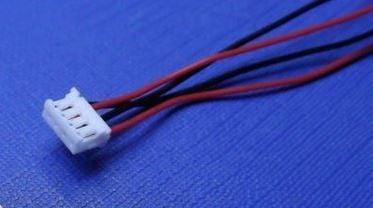
Connector on the CSP Board:
(not my photo, just grabbed from google and added the pin numbers for reference)
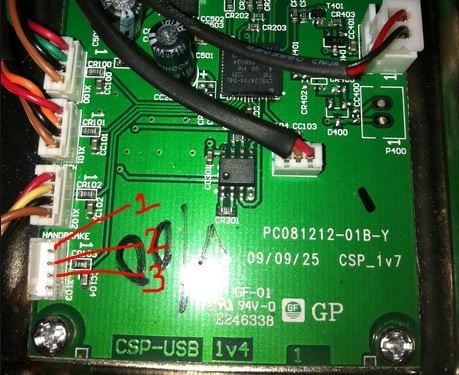
The pin connections are as such:
1 - Positive 3.3v
2 - Signal into the board
3 - Ground
Leave the 4th pin disconnected...
The handbrake port reads an increase in voltage on pin 3 as an increase in handbrake level. This is different from the other ports on the board. For example, if you connected pin 1 directly to pin 2, that would give 100% handbrake.
Examples:
(using quotes on these just for the sake of separation)
More info to follow, I just wanted to get this up here as a start... I will edit to add more later. The format of the above is probably subject to change as I add info as well. I may end up moving this to my website later.

I am providing this information to help prevent you from releasing the magic smoke from your expensive equipment. However, what you do with the info that follows is done at your own risk. I take no responsibility for your actions, that is your job.
I have been asked on occasion to provide a cable with which someone can connect a SFA1 or FL2 adapter to the handbrake port on a set of Clubsport or CSR Pedals. I have done this several times now. On one occasion I provided a few cables that would allow a person to use their Fanatec sequential shifter as the handbrake. (digital on/off) As well, I have seen many people ask just what the connector is, etc. There seems to be some mystery surrounding just what the handbrake port on the PCB can do... As well, not every CSP PCB has this port... So before you get your hopes up, you should check.
Well, the connector that fits is called a JST ZH style. These can be purchased very cheaply, along with the crimp terminals that go in the plug. The problem lies in the necessity for a tool to crimp the terminals onto the wires. This tool is at minimum, $54 US. That makes for a pretty expensive cable for a DIY project.
I am going to put more details in here as I go along, but for now I will go over some of the basics.
What does the port do?
I have seen some misinformation about this board that needs clearing up...
The handbrake port is recognized as ANALOG in the Forza series of games. So if you connect a pot to the handbrake port and turn it, the handbrake is variable from 0 to 100 percent.
The handbrake port is recognized by Windows. However, it does not show up on the Fanatec properties page. This does not matter... If you go into a game, you can map it to something.
Connector - (plugs into board):
Rather than bothering with giving you the model number of the connector, etc. Pre-made cable assemblies with connectors attached are available via Ebay, just search for JST ZH 4 and you will find some. You need 4 pin connectors! I will search for some others places.

Connector on the CSP Board:
(not my photo, just grabbed from google and added the pin numbers for reference)

The pin connections are as such:
1 - Positive 3.3v
2 - Signal into the board
3 - Ground
Leave the 4th pin disconnected...
The handbrake port reads an increase in voltage on pin 3 as an increase in handbrake level. This is different from the other ports on the board. For example, if you connected pin 1 directly to pin 2, that would give 100% handbrake.
Examples:
(using quotes on these just for the sake of separation)
Hydaulic handbrake example - (sourcing the handbrake, master cylinder, slave cylinder and lines are your choice. Derek Speare has posted several examples that can be found on ebay)
This is probably one of the simplest to accomplish as everything can be purchased ready-made. You just need to find the parts and put it together. The hardest part for someone will probably be not making a mess when bleeding the brake lines.
Here is an example handbrake: http://www.ebay.com/itm/HYDRAULIC-H...-DRIFT-HORIZONTAL-VERTICAL-BLUE-/261085921723
Example slave cylinder (pull type): http://www.ebay.com/itm/Wilwood-Pull-type-Slave-Cylinder-NEW-260-1333-/390562921899
Skate board bushings can be used on the slave cylinder. You choose the hardness to select how hard the brake is to pull.
This type of sensor should work for this: http://www.ebay.com/itm/Pressure-transducer-or-sender-500-psi-for-oil-fuel-air-/250988155990 However, I am not positive on the pressures involved, the one linked is 500 psi. It will not matter TOO much as the CSP board automatically calibrates it's minimum and maximum. Transducers of other PSI ratings can be found here: http://stores.ebay.com/Industrial-stuffs/Pressure-Transducer-/_i.html?_fsub=2911276017
Wiring... Copied directly from the ebay page:
Red: +5V. Black (yellow): ground. Blue (green): signal output.
3.3v from the PCB should still work for this fine as the sensor just acts as a pot. Attach pin 1 on the board to the Red wire on the sensor. Attach pin 2 on the board to the (blue/green) wire. Attach pin 3 on the board to the (black/yellow) wire.
I highly recommend soldering any connections you make and using heat shrink tubing to protect them. Remember, put the tubing over the wire unshrunk BEFORE you solder.
More info to follow, I just wanted to get this up here as a start... I will edit to add more later. The format of the above is probably subject to change as I add info as well. I may end up moving this to my website later.
Last edited:

 If you use a program like Logitech's diview, you will see the axis listed there and can watch it move around.
If you use a program like Logitech's diview, you will see the axis listed there and can watch it move around. Wow, 10 sets! Pass them out as stocking stuffers lol
Wow, 10 sets! Pass them out as stocking stuffers lol
